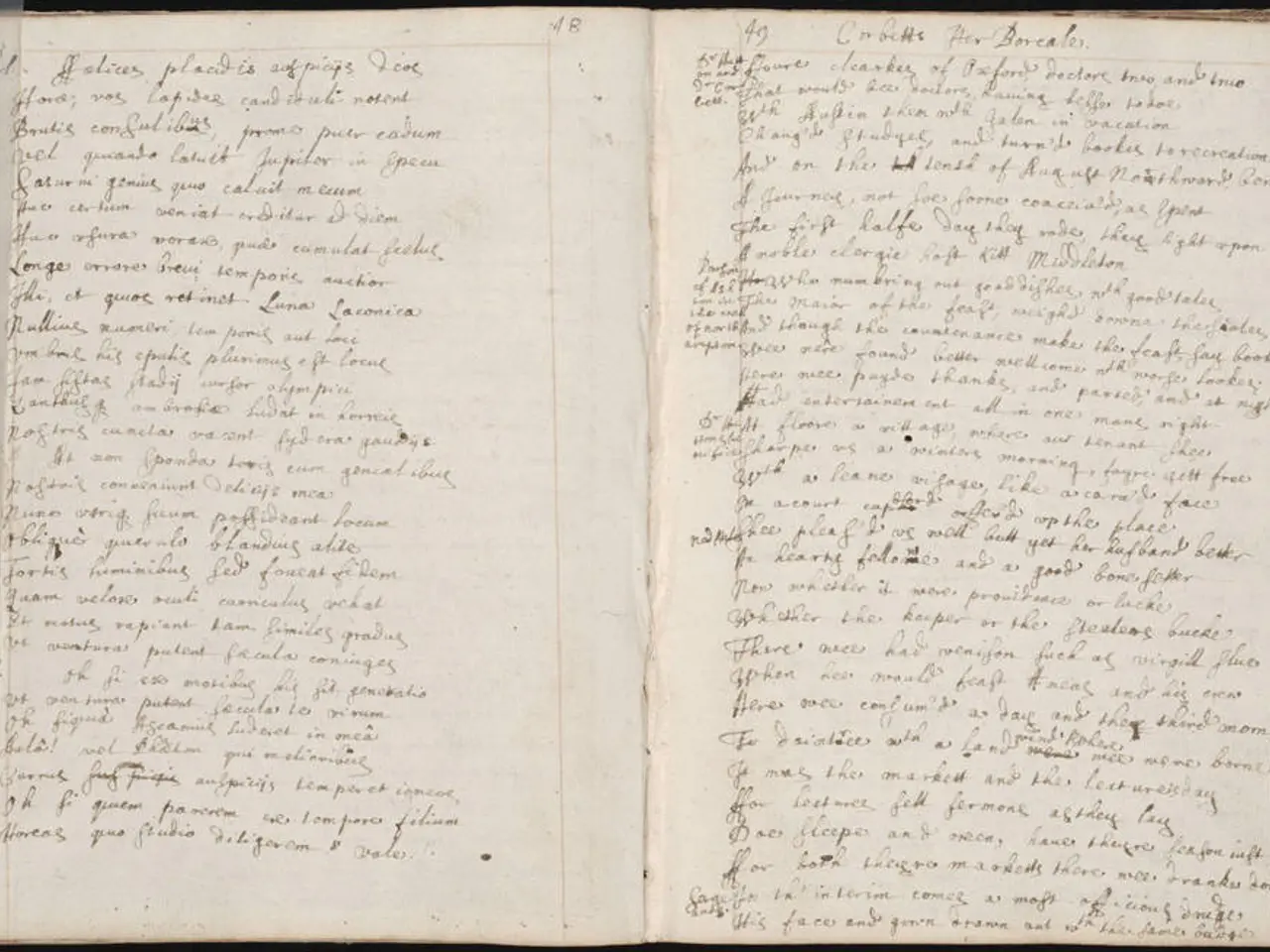Unveiling the Inner Workings of Tolkien's Creative Forge: A Peek into Middle-earth's Genesis
In the heart of England, a tale was born that would captivate the world. J.R.R. Tolkien, a renowned writer, philologist, and academic, began crafting the story of The Hobbit in the early 1930s. Initially, it was a tale for his children, drawing on his love for fairy tales, Norse mythology, and the English countryside.
Tolkien's work pioneered the genre of high fantasy, blending philological precision with spiritual and mythic themes. His creation of Middle-earth began as a private mythology, a world where elves, dwarves, and hobbits roamed. One of Tolkien's most distinctive methods was his use of maps, which he revised repeatedly to ensure geographical precision and narrative logic.
The success of The Hobbit in 1937 prompted Tolkien's publisher to request a sequel, which led to the creation of The Lord of the Rings. The process of revision was relentless, with Tolkien rewriting chapters multiple times and ensuring internal consistency across the sprawling narrative.
Tolkien's writing process for The Lord of the Rings was nonlinear and often agonizingly slow, with multiple false starts, changes in character names, and long pauses. Yet, despite the epic scale of the story, Tolkien remained focused on emotional truth. His characters are not archetypes but individuals shaped by history, culture, and personal struggle.
Language was another cornerstone of Tolkien's process. He created entire tongues for Middle-earth, such as Quenya, Sindarin, and Khuzdul. Tolkien illustrated places described in the text, updating drawings and prose together until they felt correct.
The Inklings, a literary group that included C.S. Lewis, provided a vital space for critique, encouragement, and philosophical debate during Tolkien's writing process for The Lord of the Rings. The final stages of writing The Lord of the Rings were marked by exhaustion and uncertainty.
The Hobbit and The Lord of the Rings are acts of remembrance, resistance, and renewal. They are stories of loss, joy, and terror, evoking emotions through Tolkien's prose that pulses with feeling. Tolkien remained a devout Catholic throughout his life, and his stories reflect a quiet but profound moral architecture.
The appendices alone took years to compile, as Tolkien sought to provide historical depth and linguistic coherence to the world he had built. The idea for 'The Hobbit' and 'The Lord of the Rings' was developed by Tolkien, who wrote like a mythmaker, driven by a desire to recover and reimagine the lost mythologies of Northern Europe.
In the end, Tolkien's works have left an indelible mark on literature, inspiring countless readers and writers alike. His creation of Middle-earth stands as a testament to the power of imagination and the enduring appeal of well-crafted stories.
Read also:
- Dual-function mattress offers both cooling and coziness at an affordable price.
- Krafton countersues Unknown Worlds, asserting that Subnautica 2 posed a threat of significant damage to their entire franchise, similar to the potential harm Kerbal Space Program 2 supposedly inflicted.
- Top-Notch Movie Scripts Accessible Online for Aspiring Screenwriting Artists
- Birth Month Blossom Identification Guide








